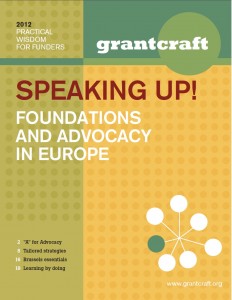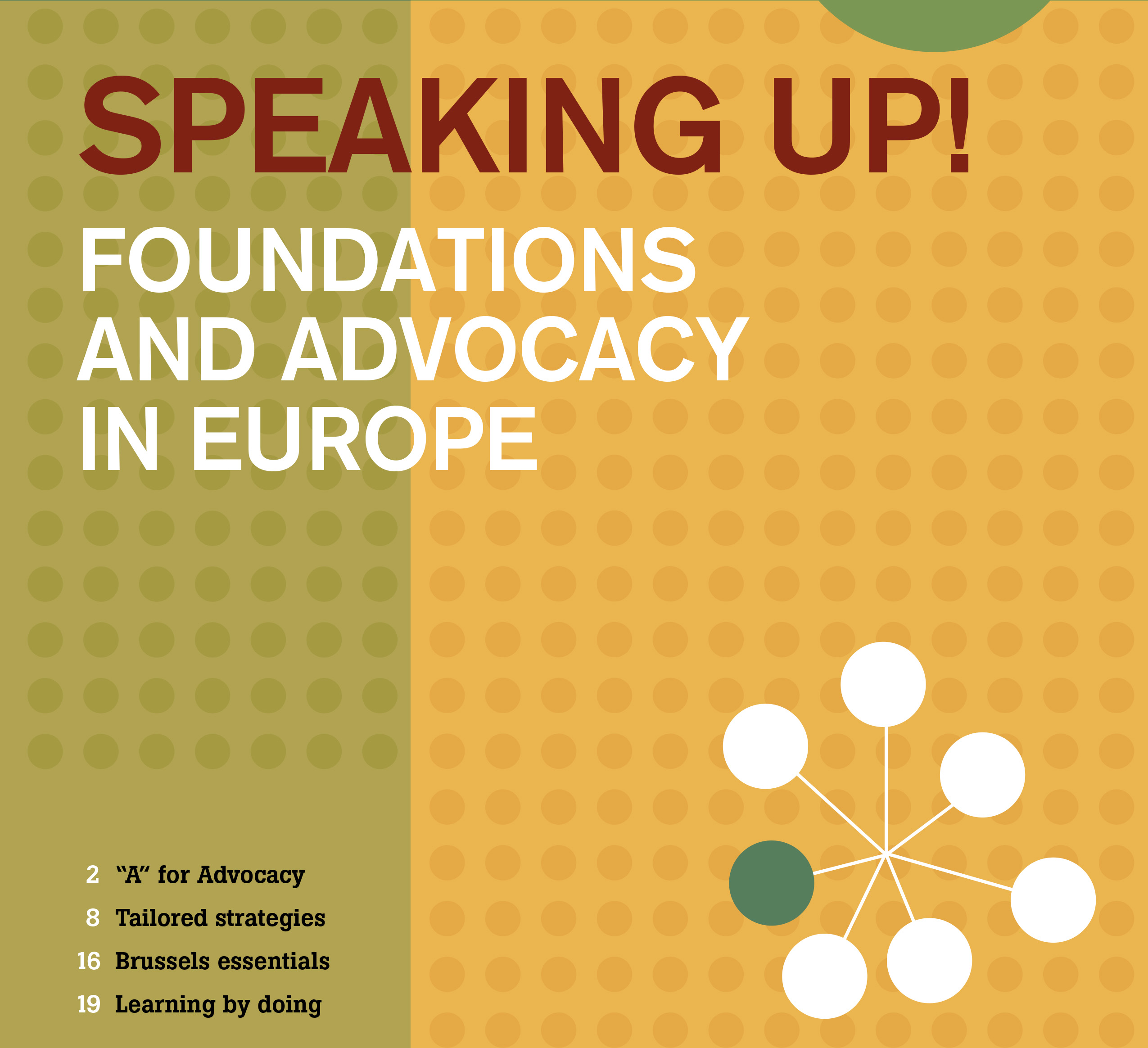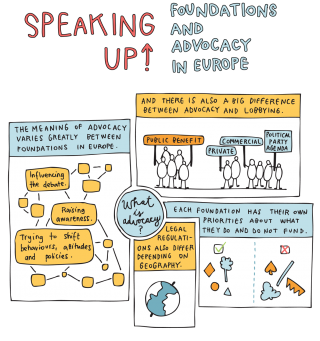Speaking Up! GrantCraft Guide Explores Advocacy Practices of European Foundations
“Funding advocacy and advocates is the most direct route to supporting enduring social change. If one of philanthropy’s objectives is to create social change, then isn’t it time for us to start investing serious resources in advocacy?” This is only one of the challenging propositions made by interviewees featured in the new GrantCraft guide, Speaking Up! Foundations and Advocacy in Europe. The guide explores the different ways in which foundations in Europe conduct and support advocacy.

Foundations across Europe are stepping up their advocacy, though they may go about it in very different ways. A long-time observer of European philanthropy notes a higher engagement in advocacy among foundations from the Mediterranean but observes that civil society organisations and NGOs in Eastern Europe lag in advocacy skills and capacities. Some foundations sponsor grantees to advocate, while others are advocates themselves. Several practitioners highlighted the importa nce of developing capacities of civil society organisations to do advocacy, but there also seems to be a trend to develop further in-house capacities.
An important challenge is linking the national and European policy contexts, and advocating and lobbying in Brussels has its particularities when compared to influencing policy closer to home. Further challenges include building and sustaining coalitions, and foundations are increasingly weighing the strategic costs involved in this. However, the biggest challenge is probably that of better monitoring and evaluating the qualitative impact of advocacy efforts in order to learn and be more effective; published evaluations on advocacy experiences are beginning to emerge and are providing invaluable learning resources for all. This new GrantCraft guide on advocacy urges foundations to reflect on the assumptions they make about policy change and advocacy, and to track their progress.
Takeaway points from the guide include:
- As a foundation, you have to be clear to your partners and grantees about what advocacy you do and what advocacy you support (as well as advocacy that you don’t do or support).
- Local, national and European public policies are connected, and in many areas the influence of European policies and legislation is increasing. This makes it essential to know the basics about the European institutions.
- Advocacy invariably involves taking risks, and results may be difficult to measure. These risks make it even more important to monitor progress and track the outcomes of your advocacy strategy.
The new GrantCraft guide was launched during the European Foundation Centre’s Autumn Assembly in Brussels that took place on 12 November 2012. Under the title ‘Foundations and Europe: Think, Act, Change,’ EFC members heard EU-Commissioner for Internal Market and Services, Michel Barnier, speak on what needs to be done to build a European Union that is both competitive and socially cohesive. In a series of panels, the EFC assembly also discussed the actual and potential role foundations are playing in shaping and reinvigorating the European project.
I welcome your thoughts on advocacy as a strategy for funders.



